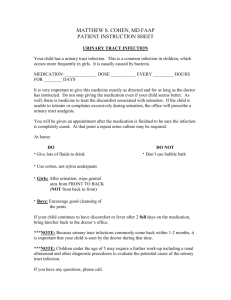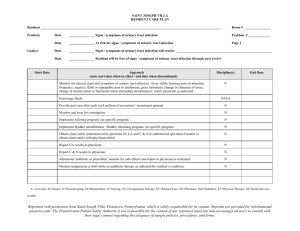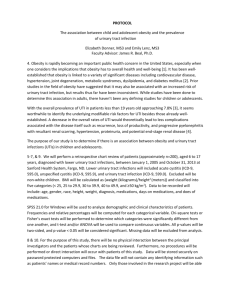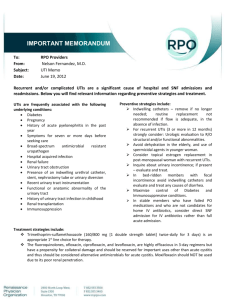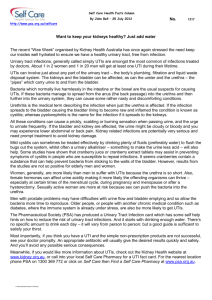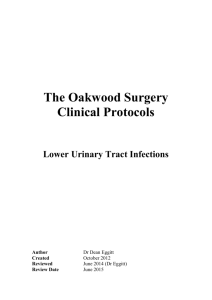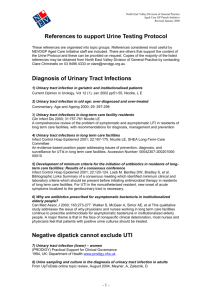Chapter 26: Microbial Diseases of the Urinary and Reproductive
advertisement
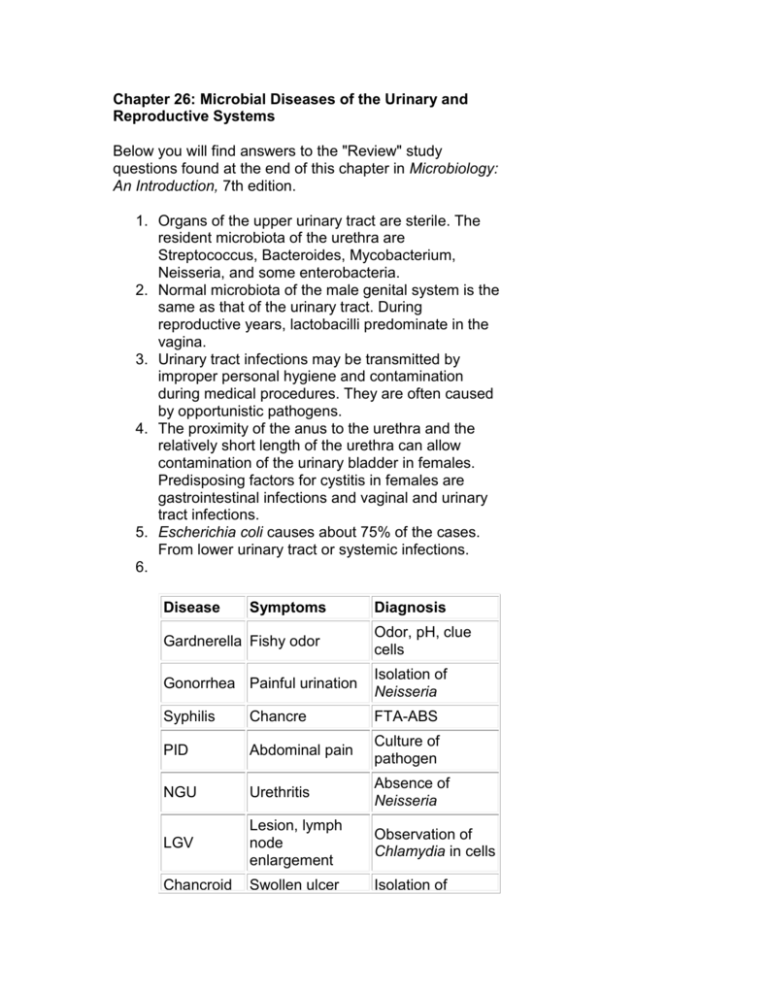
Chapter 26: Microbial Diseases of the Urinary and Reproductive Systems Below you will find answers to the "Review" study questions found at the end of this chapter in Microbiology: An Introduction, 7th edition. 1. Organs of the upper urinary tract are sterile. The resident microbiota of the urethra are Streptococcus, Bacteroides, Mycobacterium, Neisseria, and some enterobacteria. 2. Normal microbiota of the male genital system is the same as that of the urinary tract. During reproductive years, lactobacilli predominate in the vagina. 3. Urinary tract infections may be transmitted by improper personal hygiene and contamination during medical procedures. They are often caused by opportunistic pathogens. 4. The proximity of the anus to the urethra and the relatively short length of the urethra can allow contamination of the urinary bladder in females. Predisposing factors for cystitis in females are gastrointestinal infections and vaginal and urinary tract infections. 5. Escherichia coli causes about 75% of the cases. From lower urinary tract or systemic infections. 6. Disease Symptoms Diagnosis Gardnerella Fishy odor Odor, pH, clue cells Gonorrhea Painful urination Isolation of Neisseria Syphilis Chancre FTA-ABS PID Abdominal pain Culture of pathogen NGU Urethritis Absence of Neisseria LGV Lesion, lymph node enlargement Observation of Chlamydia in cells Chancroid Swollen ulcer Isolation of Haemophilus 7. 8. Transmission-Water; enters via wounds. Activities-Water contact; contact with animals or rodent-infested places. Etiology-Leptospira interrogans. 9. Symptoms: Burning sensation, vesicles, painful urination. Etiology: Herpes simplex type 2 (sometimes type 1). When the lesions are not present, the virus is latent and noncommunicable. 10. Candida albicans: Severe itching; thick, yellow, cheesy discharge. Trichomonas vaginalis: Profuse yellow discharge with disagreeable odor. 11. Disease Prevention of Congenital Disease Gonorrhea Treatment of newborn's eyes Syphilis Prevention and treatment of mother's disease NGU Treatment of newborn's eyes Genital herpes Cesarean delivery during active infection 12. Below you will find answers to the "Multiple-Choice" study questions found at the end of this chapter in Microbiology: An Introduction, 7th edition. 1. 2. 3. 4. 5. 6. 7. b e a c d c c 8. e 9. b 10. a Note: The answers to the Critical Thinking and Clinical Applications questions are available to instructors only, and are found in the Instructor's Manual.


